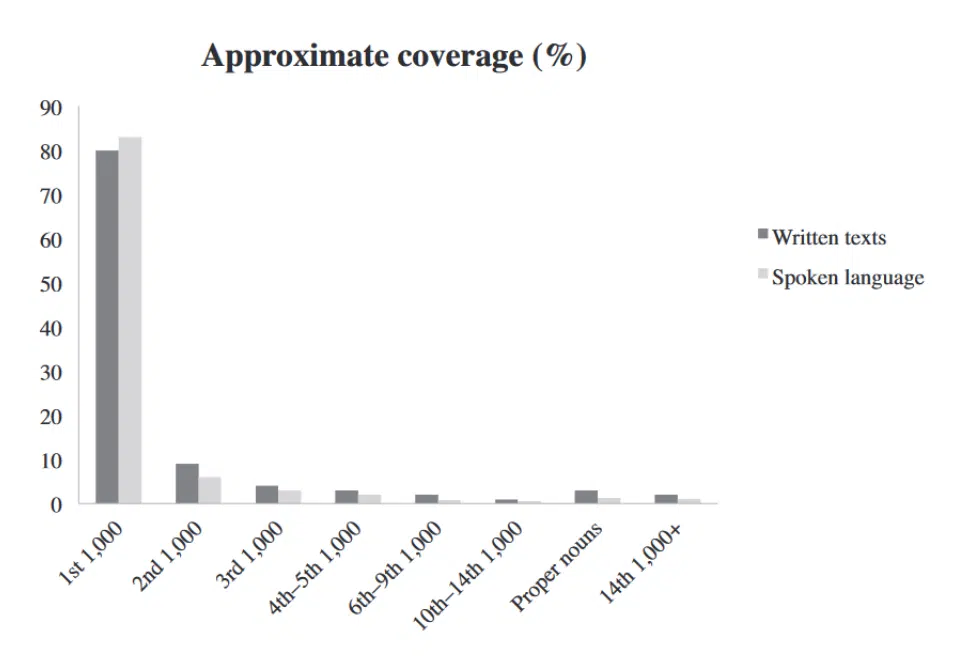Shop Anki Vocabulary Flashcards
At Speakada, we offer a range of Anki vocabulary flashcards to help you learn words in a foreign language effectively. We’ve broken down our done-for-you Anki flashcards into 3 categories: 500 picture words, top 2000 words and common phrases. To purchase select your target language below:
Shop by Language
Shop by Flashcard Type
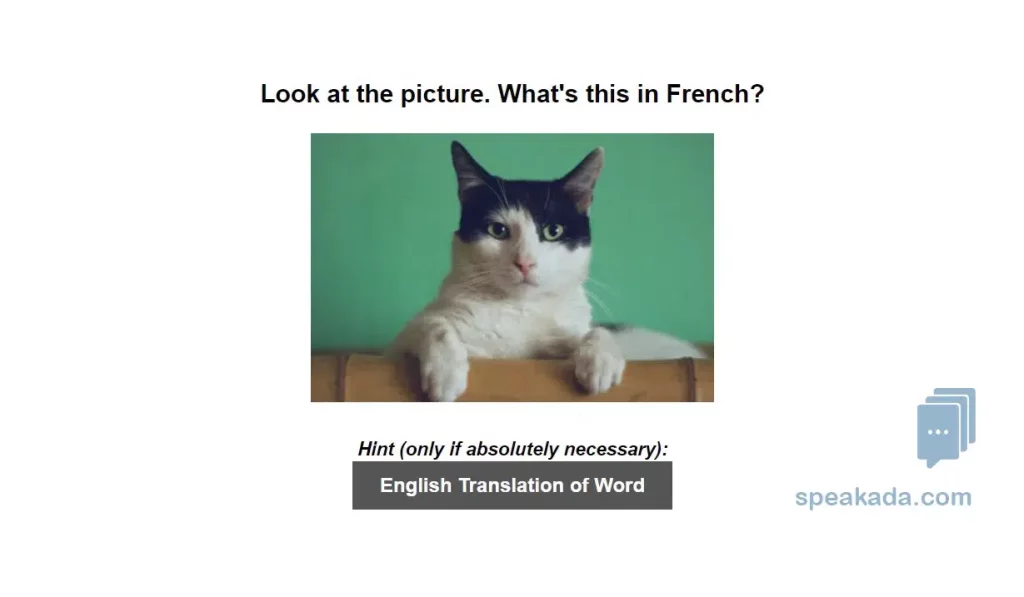
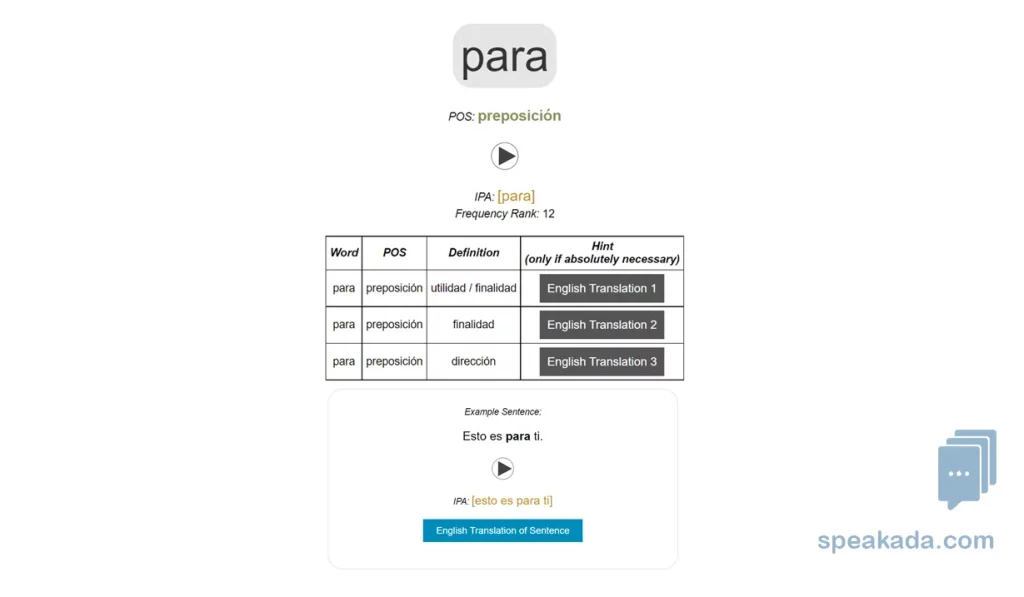
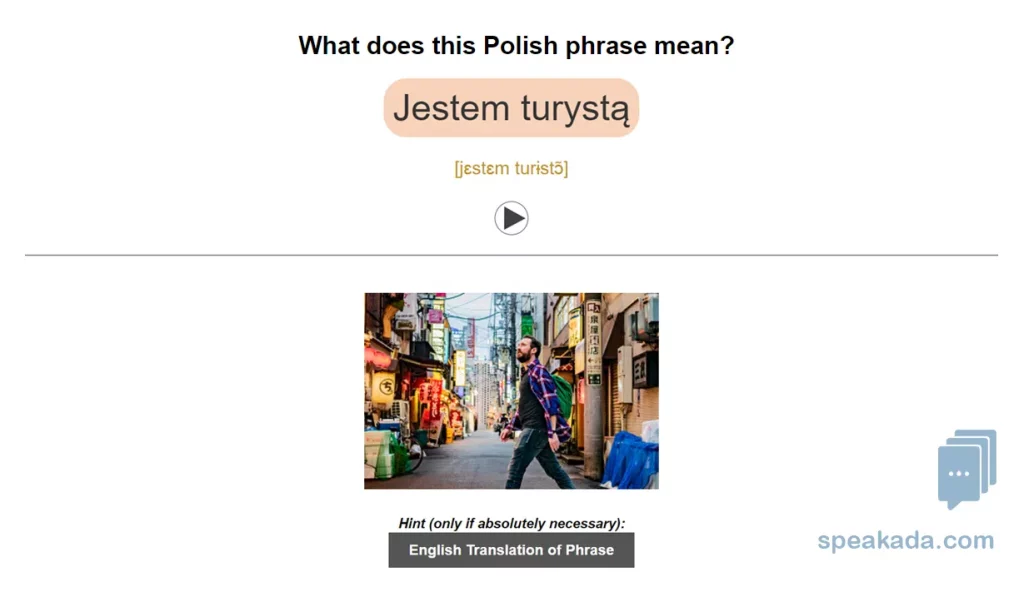
Vocabulary Flashcards: How to Learn Vocabulary Faster?
Most people believe that expanding their vocabulary hinges solely on memorizing a multitude of words. And, to a certain extent, that’s accurate – learning new words is an integral part of linguistic growth. The key to language fluency often lies in adopting effective learning strategies, and the use of vocabulary flashcards has been proven to be not only effective but faster than other methods.
In this article, we will dive into the concept of vocabulary flashcards and explore how they hold the key to accelerated vocabulary acquisition.
TABLE OF CONTENTS
- How to Learn Vocabulary Faster?
- What Is Anki and Why Is It So Important to Use Anki Vocabulary Flashcards?
- How Much Vocabulary Do Learners Need to Know?
- How Many Words Are There in the Language?
- How Many Words Do Native Speakers Know?
- How Frequent Are the Words Used?
- The Best Way to Learn Vocabulary
How to Learn Vocabulary Faster?
Learning vocabulary faster requires efficient and focused strategies. Vocabulary flashcards have been proven to be the fastest method to learn vocabulary.
What Are Vocabulary Flashcards?
Vocabulary flashcards are a widely used and effective tool for language learners to learn vocabulary of a foreign language. The purpose of vocabulary flashcards is to aid in the acquisition and retention of new words and phrases in a foreign language.
Vocabulary flashcards are a time-efficient learning method. They allow you to focus on the specific words or phrases you struggle with most, rather than reviewing an entire list.
These flashcards typically consist of two sides: one side displays a word or phrase in the target language, and the other side provides its translation or definition in your native language.
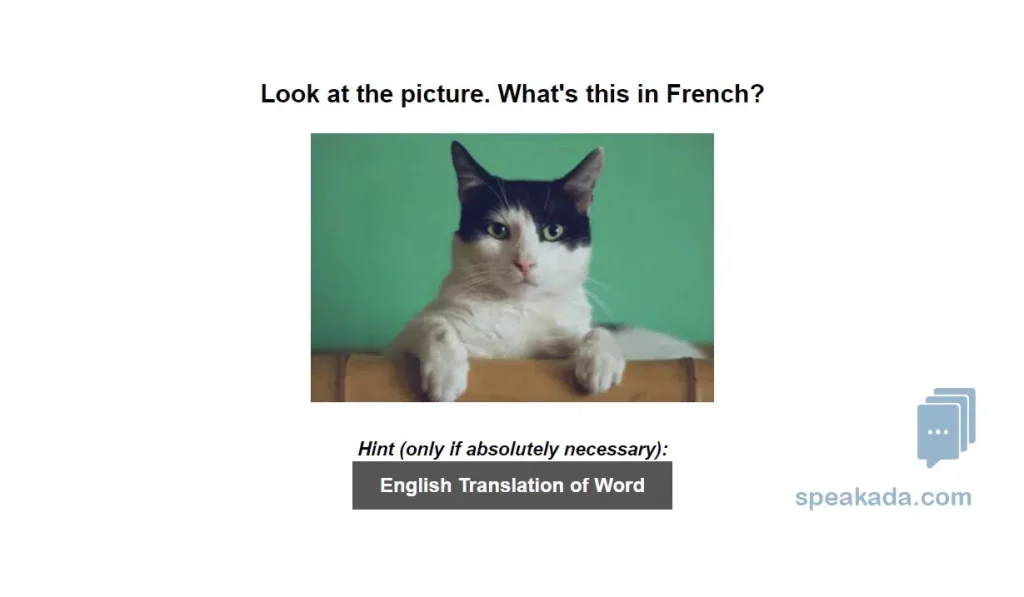
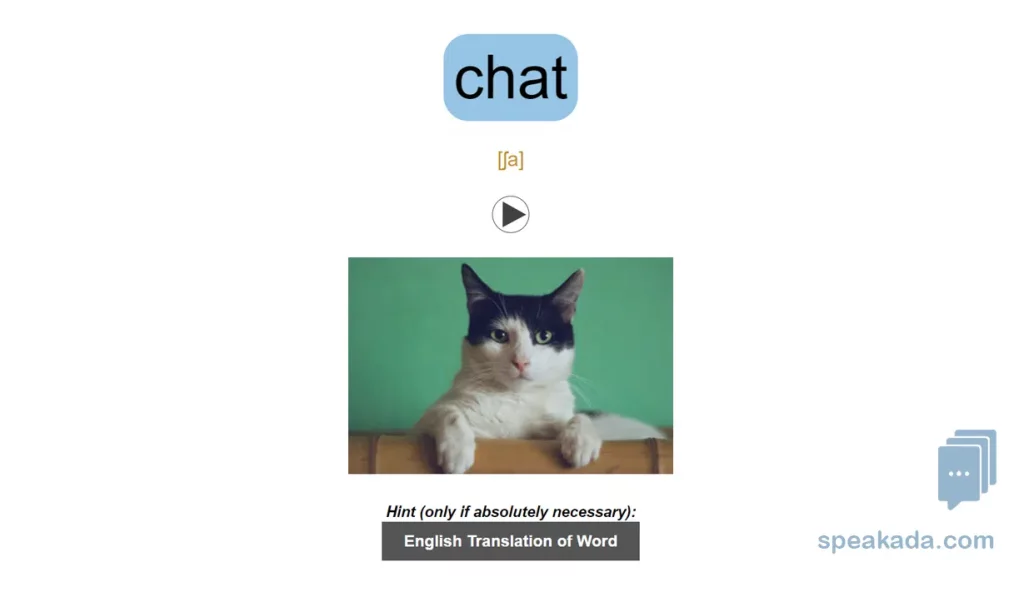
However, there can be other vocabulary flashcard types. For instance, you could have the definition or translation on the front side, and the word or phrase in the target language on the back side. There’s also the opportunity to use images and audio to enhance how you study your vocabulary flashcards.
Why Should You Use Vocabulary Flashcards?
Vocabulary flashcards are effective for several reasons, supported by research in the field of language learning and cognitive science.
Here are some key reasons why vocabulary flashcards work, along with references to relevant studies:
1. Active Recall
Engaging in active recall with vocabulary flashcards involves testing your memory by attempting to remember the meaning or translation of a word before checking the answer. This proactive approach not only assesses your current knowledge but also strengthens your memory and consolidates the learning process.
Research conducted by Hanson and Brown from Arcadia University (USA) adds weight to the effectiveness of active recall with flashcards. In their study involving students in a beginning Spanish course, participants were required to study with Anki flashcards.
The findings revealed a positive correlation between the number of days spent studying with Anki and Spanish performance at the semester’s end. This study underscores the significant impact of incorporating active recall through tools like Anki and flashcards in language learning, supporting its role in enhancing overall performance.
2. Spaced Repetition
Vocabulary flashcards are often used in conjunction with spaced repetition systems (SRS). SRS software or apps schedule flashcard reviews at optimal intervals.
Cards you struggle with are reviewed more frequently, while those you remember well are revisited less frequently. This approach ensures that you retain words in your long-term memory.
Researchers at Macquarie University in Australia, explored the impact of spaced repetition on Test of English for International Communication (TOEIC) scores. Their study revealed significant relationships (p < .05) between total SRS repetitions and TOEIC listening and overall score gains.
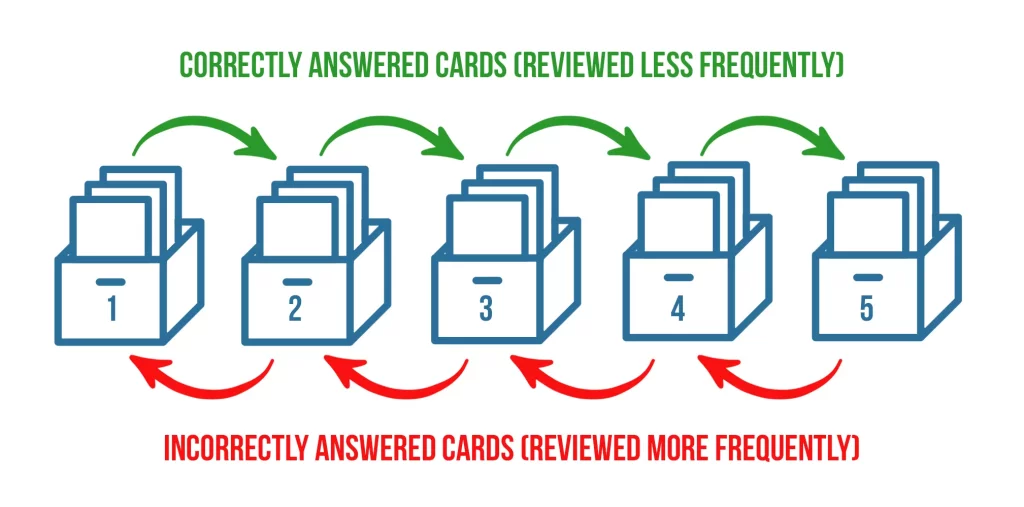
This suggests that incorporating spaced repetition into your vocabulary learning can be particularly beneficial, especially when preparing for language proficiency tests. In essence, integrating spaced repetition into your language learning routine provides a targeted and effective approach for improved proficiency.
3. Portability
Digital vocabulary flashcards in particular are incredibly versatile and portable. Whether you prefer traditional paper flashcards or digital flashcard apps, they can be used on the go, making it easy to fit language learning into your daily routine.
Research conducted at Kanda University of International Studies in Japan highlighted the advantages reported by students using digital vocabulary flashcards. The study found that learners appreciated the ability to use time more effectively, study in many places, carry a lightweight learning tool (as opposed to heavy textbooks), and establish a more manageable study routine.
This research underscores how vocabulary flashcards, especially digital cards, enhance not only the learning experience but also the practical aspects of incorporating language learning into your daily life.
What Is Anki and Why Is It So Important to Use Anki Vocabulary Flashcards?
Anki is a highly customizable and powerful open-source spaced repetition software (SRS) that is widely used for learning and retaining information, including vocabulary, in a highly efficient and organized manner.
The Anki app allows users to create digital flashcards and then uses a spaced repetition algorithm to schedule reviews at optimal intervals to enhance memory retention.
Here are a few reasons why you should use Anki vocabulary flashcards:
1. Efficiency

Anki is highly efficient. It minimizes the time you spend on words you already know well and focuses your efforts on words that need more review, optimizing your learning process.
Anki encourages active recall, where you try to remember the word’s meaning before revealing it. Active recall has been shown to be more effective for memory retention than passive learning.
2. Progress Tracking

Anki provides detailed statistics and progress tracking, so you can see how well you’re doing and where you might need more focus. This feature helps you stay motivated and informed about your learning.
3. Long-Term Learning

Anki is designed for long-term learning. It helps you remember vocabulary over the long haul, rather than for just a few days or weeks. Anki uses spaced repetition, which is a scientifically proven learning technique.
It optimizes the timing of your reviews, ensuring that you review words just before you’re likely to forget them. This approach helps you retain vocabulary in your long-term memory.
How Much Vocabulary Do Learners Need to Know?
The amount of vocabulary learners need to know depends on one’s current language level and goals. However, there are 3 ways in which linguists attempt to figure out the magic number of words that learners need to know:
- How many words are there in the language
- How many words native speakers know
- How frequently the words are used
1. How Many Words Are There in the Language?
To figure out how many words you should learn, one approach is to consider the total number of words in the language.
The easiest way to gauge the total vocabulary size of a language is to count the number of word entries in large dictionaries.
Let’s check out the examples of 2 top English dictionaries:
- Oxford English Dictionary (OED) – The OED is one of the most comprehensive and authoritative dictionaries of the English language. It contains over 600,000 words and includes detailed historical information about the origin and evolution of words.
- Merriam-Webster Dictionary – Merriam-Webster’s Collegiate Dictionary, a widely used American English dictionary, contains over 400,000 words.
These dictionary examples show that if you decided to learn every single word in a language that you’re learning, you would have to learn around 400,000 to 600,000 words!
If you learned 600,000 words in a year, then you’d need to learn around 1,643 words per day over 365 days.
| Dictionary | Number of Words | Words to Learn Per Day (within 1 year) | Number of Years to Learn All Words |
|---|---|---|---|
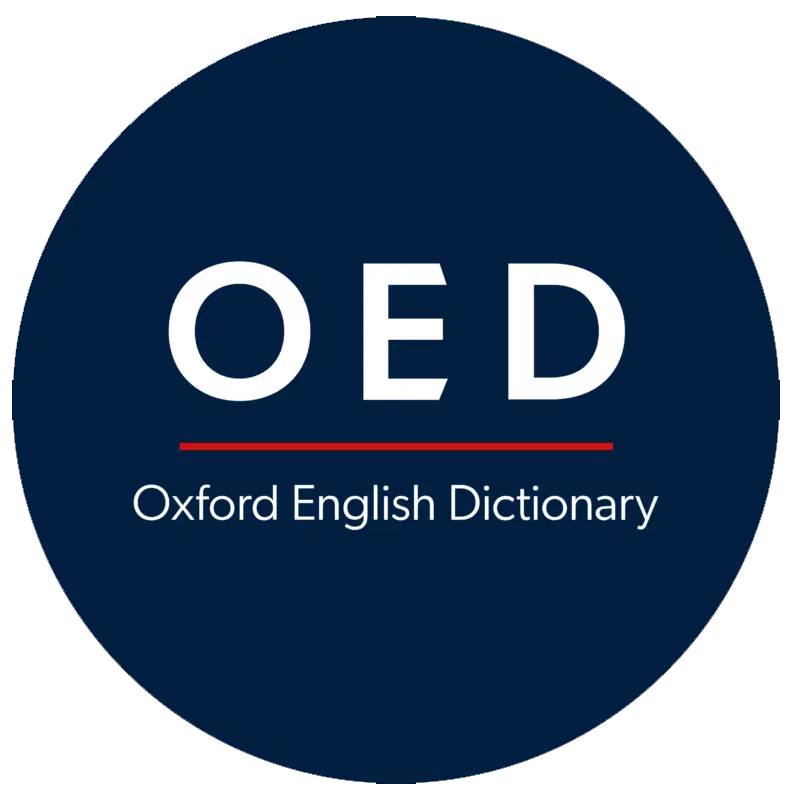 | 600,000 | 1643 words | 166 years |
 | 400,000 | 1096 words | 112 years |
If you extend your learning period beyond a year, the daily word count can be adjusted accordingly. If you’re happy to learn 10 new words per day, then you can learn around 300 words per month. So, it would take you around 2,000 months or over 166 years to learn 600,000 words.
Learning hundreds of thousands of words might seem overwhelming and impossible, especially considering that some words are technical, proper nouns, overly formal, or rare, and not commonly known by native speakers.
This leads to the question: How many words do native speakers actually know?
Instead of aiming to learn every single word, it might be more useful for language learners to focus on the number of words known by native speakers.
2. How Many Words Do Native Speakers Know?
Rather than embarking on the daunting quest to master every word in a language, a more practical approach is to consider what native speakers of the language know. You can use this as a goal of how much you need to learn in order to speak or be proficient in a language.
For more reliable insights, we turn to studies like those conducted by Goulden from the Victoria University of Wellington (New Zealand) in 1990. Also consider the study by Zechmeister from Loyola University in Chicago (USA) in 1995. These studies suggest that educated adult native speakers of English command vocabularies of under 20,000 word families.
A study in 2016 done by researchers of Ghent University (Belgium) found that the number of English words known by first-year university students is around 9,800 words.
These studies show that individuals who speak their first language as native speakers typically command a vocabulary ranging from 10,000 to 20,000 word families or lemmas.
A word family, or lemma, encompasses the root word along with all its inflections. For example:
ROOT WORD: Friend

ROOT WORD: Photo

ROOT WORD: Sun

The word estimates of 10,000 to 20,000 words might seem low when compared to the 400,000 to 600,000 total words in large dictionaries. It’s important to note that the 10,000 to 20,000 word estimates use word families as the counting unit, which includes several related words derived from a common root. Proper nouns are excluded from the count.
The target of mastering 10,000 words becomes more realistic when approached strategically. For example, learning 10,000 words in a year means tackling around 27 words per day over 365 days.
If you extend your learning period beyond a year, the daily word count can be adjusted accordingly. If you’re happy to learn 10 new words per day, then you can learn around 300 words per month. So, it would take you around 33 months or under 3 years to learn 10,000 words.
It’s crucial not to randomly pick words. Selectivity is key. Focus on words that are frequently used and relevant to your life and goals. This targeted approach ensures a more meaningful and effective language learning journey.
3. How Frequent Are the Words Used?
Now that we know how many words exist in a given language and the average number of words known by native speakers, how do we go about learning words and in what order?
The simple answer is: word frequency.
Frequency-based studies reveal that some words are significantly more useful than others. In essence, not all words are created equal.
The research paper titled “Frequency as a Guide for Vocabulary Usefulness” by Vilkait-Lozdien and Schmitt in 2019 discusses the importance of setting goals for learning vocabulary. When learning a second language, understanding all the words is challenging because there are so many. Therefore, it’s crucial to prioritize and focus on two things:
- Focus on Common Words: Words that appear frequently are more important. Studies of lexical coverage show that certain common words are encountered more often, following a pattern known as Zipf’s law.
- Learn Words You Encounter Often: Choosing words that you come across frequently increases the chances of effectively learning and remembering them.
Focusing on high-frequency words—those used most often in a language—is a smart strategy for language learners. According to researcher Paul Nation, about 2,000 word families fall into this high-frequency category. Nation observes that these 2,000 words offer substantial coverage of nearly 90% of most native language materials, as shown in a 2006 study.
This 2,000 figure is now widely recognized in educational materials, teacher guidebooks and research publications. So, prioritizing these important words can noticeably improve your understanding of the language more quickly and effectively.
The Best Way to Learn Vocabulary
When it comes to mastering high-frequency vocabulary and beyond, the approach matters.
Setting our sights first on the top 2,000 word families, renowned researcher Paul Nation advocates for a direct and intentional learning method. His recommendation involves the use of vocabulary flashcards, emphasizing the need for explicit direct learning.
Learn more about the 2000 Words Anki flashcards in your target language
Limitations of Traditional Approaches: A Case for Vocabulary Flashcards
Traditional methods of vocabulary acquisition, such as relying solely on extensive reading or classroom contact hours, have proven to be insufficient. Research underscores these inadequacies, prompting a paradigm shift towards more effective alternatives—enter vocabulary flashcards.
Studies in various language classrooms from Japan, Indonesia, Israel, and Spain indicate that learners typically grasp only 2 to 3 words per hour of classroom instruction. This limitation, as noted by Laufer from the University of Haifa and Milton from Swansea University, emphasizes the inadequacy of conventional classroom methods.
Professor Cobb from The Université du Québec à Montréal also examined the effectiveness of second language reading for vocabulary acquisition. His study confirmed that relying solely on free reading isn’t enough for most learners. Many useful words are unlikely to be encountered in natural reading in sufficient numbers for consistent learning to occur.
To bridge this word knowledge gap, vocabulary flashcards emerge as a targeted and efficient solution to elevate vocabulary beyond the basics.

Optimizing Vocabulary Learning With Digital Anki Flashcards
From the research, we know that:
- using vocabulary flashcards are scientifically proven to be an effective and fast method for vocabulary acquisition
- digital vocabulary flashcards are more effective than physical flashcards due to the automated management of flashcards, portability and integration of spaced repetition and active recall
- you should learn vocabulary based on high word-frequency of the target language to learn vocabulary faster
Therefore the best way to learn vocabulary is through digital Anki vocabulary flashcards that are specifically created based on research and high word-frequency. Learn more about the Anki vocabulary flashcards available at Speakada:










